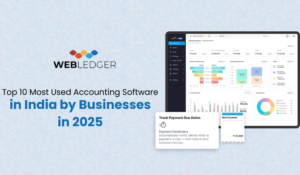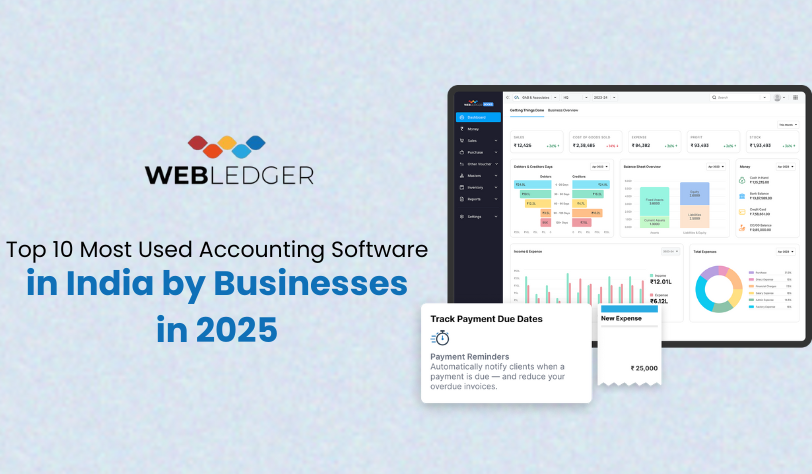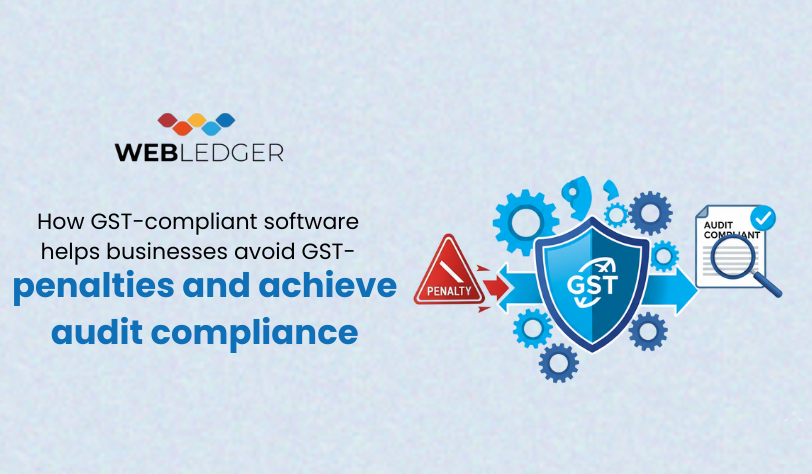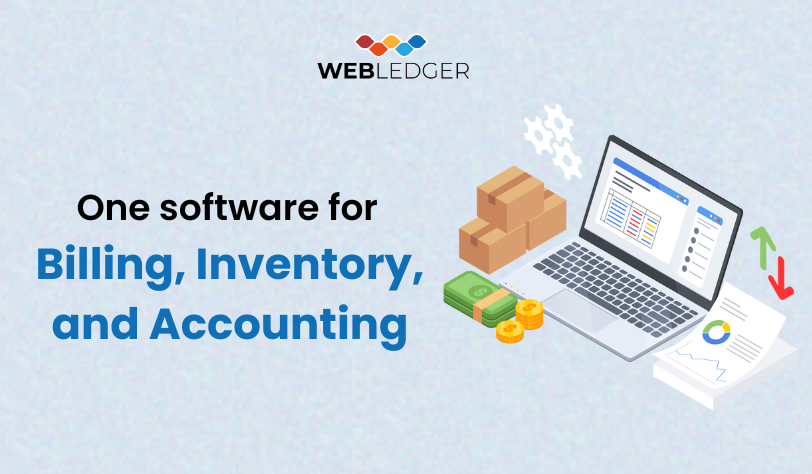Imagine that you walk into your favorite store to buy that item you want. But when you get there, the shelf is empty. You ask a staff member, and they say, “Sorry, we’re out of stock.” This can be very frustrating. Now, think about being a business owner. That “out of stock” moment doesn’t just upset your customer; it means you lose a sale. It could disappoint the customers and push them to shop elsewhere, hurting your profits. This small problem can lead to bigger issues. Track Stock Levels and Avoid Out-of-Stock, by fetching information from inventory reports.
This situation affects not only big warehouses and factories. Small businesses, local shops, and online sellers deal with the same issue. In today’s fast-paced world, where customers want immediate options, running out of stock can seriously hurt your business. That’s why we need to talk about inventory management. It’s very important to keep track of your stock levels to avoid those annoying “out-of-stock” moments. Smart tools can help make this easier. We have introduced WebLedger Books, a smart solution to help you manage your inventory effectively so you stay on track.
Why “Out-of-Stock” is a Problem for Business
“Out-of-stock” is a phrase no business owner wants to hear. It shows a breakdown in the flow of goods, a missed chance for sales, and can hurt your reputation. So, what happens when you run out of stock?
1. Lost Sales and Revenue
This is the most direct impact. When a customer wants to buy something, and you don’t have it, they can’t buy it from you. That’s a lost sale and lost revenue. For example, if a popular smartphone is out of stock in your store, customers will go to a competitor who has it available. Over time, these lost sales add up and affect your profits.
2. Disappointed Customers and Damaged Reputation
Think about your own experiences. How do you feel when you can’t get what you want? Annoyed, right? Your customers feel the same. If you keep running out of stock, customers will feel frustrated and may see your business as unreliable. A bad experience can quickly spread through word-of-mouth and online reviews, further hurting your business. Customers want a smooth shopping experience, and being unable to meet their needs disrupts that.
3. Increased Costs
You might think that running out of stock saves money because you aren’t buying more inventory. But it can actually lead to higher costs:
Expedited Shipping: If you realise you’re low on a crucial item, you may have to pay extra for fast shipping from your supplier, hurting your profit margins.
Emergency Orders: Smaller emergency orders usually mean you miss out on bulk discounts.
Loss of Customer Loyalty: Losing a customer costs more than keeping one. It’s often more costly to gain new customers than to retain existing ones.
4. Reduced Brand Loyalty and Trust
Customers tend to choose businesses they trust. If you frequently fail to meet demand, that trust decreases. They will start looking for other suppliers who can provide what they need. This makes it harder to build long-term relationships and keep loyal customers.
5. Hindered Business Growth
Imagine trying to grow your business or launch new products while struggling to meet existing demand. Out-of-stock situations slow you down, making it hard to grow and take advantage of new opportunities. You can’t expand if you can’t deliver consistently.
If “out-of-stock” is the villain, then proactive inventory management is your solution. It means being prepared and knowing what you have, what you need, and when you need it. This approach helps you turn potential losses into consistent wins.
What is Inventory Management?
The process of ordering, storing, and selling a company’s or firm’s goods is called inventory management. This includes raw materials, parts, and finished products. The goal is to have the right amount of stock available at the right time and cost. This might sound simple, but it involves many details!
The Goals of Good Inventory Management:
Meet Customer Demand: Make sure you have enough products available to satisfy customers when they want to buy.
Minimise Carrying Costs: Avoid keeping too much inventory, which can use up cash, lead to storage costs, and risk becoming outdated.
Prevent Stockouts: Work actively to avoid empty shelves.
Optimise Cash Flow: Good inventory management helps free up money that can be used in other areas of your business.
Improve Operational Efficiency: A well-organised inventory system makes your entire supply chain smoother, from ordering to delivery.
Key Strategies to Track Stock Levels and Avoid Out-of-Stock
Now that we understand why this is important, let’s look at how to do it. Here are practical strategies to keep stock levels healthy and avoid surprises.
1. Start with Accurate Data
You can’t manage what you don’t measure. While this may seem obvious, many businesses struggle with wrong inventory counts.
Regular Stock Counts: Even with advanced systems, doing physical counts is necessary. They help find errors and ensure your digital records match reality. You can do a full annual count or smaller counts of specific items more often.
Record Every Movement: Keep track of every item that comes in (purchases, returns) and goes out (sales, damaged goods). This includes sales, returns, received goods, and transfers between locations.
Use Barcoding and Scanning: For businesses with a lot of inventory, barcoding and scanning systems are very helpful. They reduce mistakes, speed up processes, and provide real-time data.
2. Know Your Sales Patterns and Forecast Demand
This is where you get smart about predicting what customers want.
Historical Sales Data: Look at past sales trends. When do certain products sell more? Are there seasonal spikes? For example, a toy store sees a big increase in sales during the holiday season.
Seasonal Trends: Find products that sell better at certain times of the year (e.g., swimsuits in summer, heaters in winter).
Promotional Activities: If you have a sale or marketing campaign, expect an increase in demand for those products.
Economic Factors: Look at broader economic trends as they can influence consumer spending.
Supplier Lead Time: Know how long it takes for your supplier to deliver an order. This “lead time” is essential for planning when to reorder.
Use Forecasting Tools: Larger operations may benefit from software that uses complex formulas to predict demand.
For example, if you own a bakery and notice that demand for birthday cakes doubles on weekends, adjust your forecasting accordingly. Prepare more ingredients and staff for weekend production.
3. Set Reorder Points and Quantities
This is where strategy becomes action.
Reorder Point (ROP): This is the minimum amount of an item that signals a new order from your supplier. It’s calculated based on your daily sales rate, supplier lead time, and safety stock.
Formula: ROP = (Daily Sales Rate x Lead Time) + Safety Stock
Safety Stock: This is extra inventory held to prevent running out due to unexpected demand or supplier delays.
Economic Order Quantity (EOQ): This calculation helps determine the best order size to minimise total inventory costs. It’s more complex but can benefit businesses with a lot of inventory.
For example, if you sell 10 units a day and your supplier takes 5 days to deliver, your reorder point might be 50 units. If you want a safety stock of 20 units, your ROP becomes 70 units. When your stock reaches 70, it’s time to reorder.
4. Use Stock Alerts and Low Inventory Notifications
This is where technology helps you stay informed. Manual checks can lead to mistakes and are time-consuming.
Automated Notifications: Modern inventory tools, like WebLedger Books, will send you alerts when inventory levels fall below a set point.
Email/SMS Alerts: Get notifications directly to your email or as a text message, so you know instantly wherever you are.
Dashboard Visualisations: Many inventory systems provide clear dashboards that highlight items low on stock, often colour-coded for quick reference.
Why are stock alerts important? They help you avoid surprises. Instead of finding an empty shelf when a customer asks for an item, you get a warning, giving you time to reorder before you run out. This changes your inventory management from reactive to proactive.
5. Use Inventory Management Tools
While spreadsheets can work for very small businesses, they quickly become complicated and prone to errors as your business grows. That’s where dedicated inventory tools come in.
Inventory Management Software: These programs automate many aspects of inventory management, from tracking stock levels to creating purchase orders and sales reports.
Point-of-Sale (POS) Systems: Many modern POS systems come with inventory management features. Every sale automatically updates your stock levels.
Enterprise Resource Planning (ERP) systems: They help larger businesses manage all their functions, like finance, sales, and inventory, in one place.
These tools give you real-time information, cut down on manual work, and improve accuracy. This allows you to spend more time on other important parts of your business. ERP systems are essential for an efficient supply chain.
6. Optimising Your Supply Chain
Your supply chain includes everyone involved in getting your product from the supplier to the customer. Optimising it is important for avoiding stockouts.
Build Strong Supplier Relationships: Good relationships with your suppliers are essential. A reliable supplier who communicates well and delivers on time is invaluable.
Use Multiple Suppliers: Have backup suppliers for essential items if possible. This lowers your risk if one supplier has problems.
Streamline Your Receiving Process: Quickly and accurately receive, inspect, and store goods when they arrive. Delays here can mean products are not available for sale.
Organise Warehousing and Storage: Make your storage space efficient. Know where everything is so you can easily pick and pack orders.
Regularly Review Supplier Performance: Are your suppliers meeting deadlines and maintaining quality? Regular checks help you find and fix issues.
A well-managed supply chain ensures a smooth flow of goods, reducing delays and preventing stockouts.
7. ABC Analysis for Strategic Management
Not all products are the same. Some are more valuable, sell faster, or have higher profit margins. ABC analysis helps you focus your inventory management efforts.
Category A: High-value items that account for a large share of your sales revenue (e.g., 80% of revenue from 20% of products). These need close monitoring and frequent reorders. Stockouts here can cause major problems.
Category B: Medium-value items that bring in a moderate share of revenue and stock. These need regular monitoring.
Category C: Low-value items that make up a small portion of revenue but a large amount of stock. You can check these less often and order larger quantities.
Focusing on Category A items can greatly reduce the risk of stockouts without causing you to over-manage less important inventory.
8. Regular Performance Review and Adjustment
Managing inventory is an ongoing process of learning and adjusting.
Analyse Stockout Incidents: When a stockout happens, find out why. Was it a mistake in forecasting, a supplier delay, or a data entry error? Learn from it.
Review Inventory Turnover Rate: How quickly are you selling your inventory? A high turnover rate is generally good and means strong sales. A very low rate may mean you hold too much slow-moving stock.
Adjust Parameters: Based on your analysis, change your reorder points, safety stock levels, and forecasting methods. Business conditions change, so your inventory strategy must adapt.
Introducing WebLedger Books: Your Smart Inventory Management Partner
At WebLedger, we recognise that small and medium businesses struggle with managing their finances and operations. That’s why we created WebLedger Books – an easy-to-use accounting software. It goes beyond just balancing your books and acts as your complete financial assistant, especially with its smart inventory management features.
How WebLedger Books Helps You Track Stock Levels:
WebLedger Books is not just for recording transactions; it provides insights you can act on. Here’s how it simplifies inventory tracking and helps you avoid costly stock shortages:
1. Automatic Inventory Updates from Purchases and Sales
WebLedger Books makes inventory management easier and more automated.
Seamless Integration: When you record a purchase, WebLedger Books automatically adds those items to your inventory.
Real-time Deductions: When you record a sale, the software deducts those items from your stock.
No Manual Updates: This means you don’t need to update inventory manually, reducing mistakes and saving you time. You won’t have to deal with complex spreadsheets for every sale or purchase – WebLedger Books does it all in the background, keeping your stock levels current.
2. Comprehensive Inventory Summary Reports
Knowing what you have in stock is one thing, but understanding its value is crucial. WebLedger Books provides clear inventory summary reports.
Instant Overview: You can quickly see how much of each item you have.
Weighted Average Cost Calculation: This method helps calculate the average cost of items you buy at different prices over time.
What is Weighted Average Cost (WAC)? It averages the cost for all units of an item – i.e. it divides the total cost of items available for sale by the total number of units available.
Why is WAC Important?
Accurate Profit Margins: It gives you a better picture of your gross profit.
Stable Inventory Valuation: WAC stabilises your inventory value, especially when prices change, making your financial statements consistent.
Simplified Accounting: For businesses with frequent purchases of the same item at varied prices, WAC makes bookkeeping easier, as you don’t have to track individual batches.
WebLedger Books Handles the Math: You don’t need to worry about calculations. Based on what you enter for purchases and sales, WebLedger Books automatically calculates the WAC for each item. This means your inventory valuation is always accurate and essential for financial reporting and decision-making.
3. Data-Driven Insights for Better Decisions
With WebLedger Books, your inventory data becomes a valuable tool for planning.
Identify Fast-Moving vs. Slow-Moving Items: Easily see which products sell quickly and which don’t, so you can plan purchases wisely.
Understand Profitability by Product: By comparing the cost of goods sold (using WAC) to your sales price, you can identify your most profitable products.
Support for Purchase Planning: With a clear view of sales and stock on hand, creating future purchase orders is more efficient. You can make informed decisions about what to reorder and in what quantities.
4. User-Friendly Interface and Accessibility
We understand that not everyone has accounting knowledge and not everyone is an accounting expert. WebLedger Books is designed to be simple.
Intuitive Design: The clean interface makes it easy to find the information you need.
Cloud-Based: As a cloud-based software, you can access your WebLedger Books account anytime, anywhere, on any device with an internet connection. This way, you can check your stock levels even when you’re away from your shop or office.
How WebLedger Books Fits into Your “No Out-of-Stock” Strategy:
WebLedger Books directly supports the strategies we’ve discussed.
Accurate Data: It keeps your inventory records correct because they update automatically from your transaction entries.
Forecasting Support: By providing a clear sales history, it helps you predict future inventory needs.
Easy Reporting: The inventory summary and average cost calculations help you understand your stock value and plan your future purchases easily.
Basis for Alerts (Future Upgrades): While the current features focus on strong tracking and reporting, the accurate data in WebLedger Books sets the stage for future updates like automatic stock alerts and notifications for low inventory. This would help you manage your inventory more effectively.
WebLedger Books simplifies inventory tracking, letting you concentrate on growing your business without worrying about running out of stock. It’s a crucial inventory tool for any business that values efficiency and profit.
Conclusion
Effective inventory management is important for the success of a business. Stockouts lead to lost sales and damaged relationships. With the right strategies, you could enhance efficiency. Analysing sales patterns and setting smart reorder points helps you maintain control. Tools like automated stock alerts and detailed reports improve decision-making and profitability.
WebLedger Books automates tracking purchases and sales, providing accurate inventory summaries and valuable insights. This allows you to spend less time on manual tasks and focus on growth. Take control of your inventory with smart tools. Achieving “never out-of-stock” is essential for success, and WebLedger Books can help you. Sign up today for a free demo!










